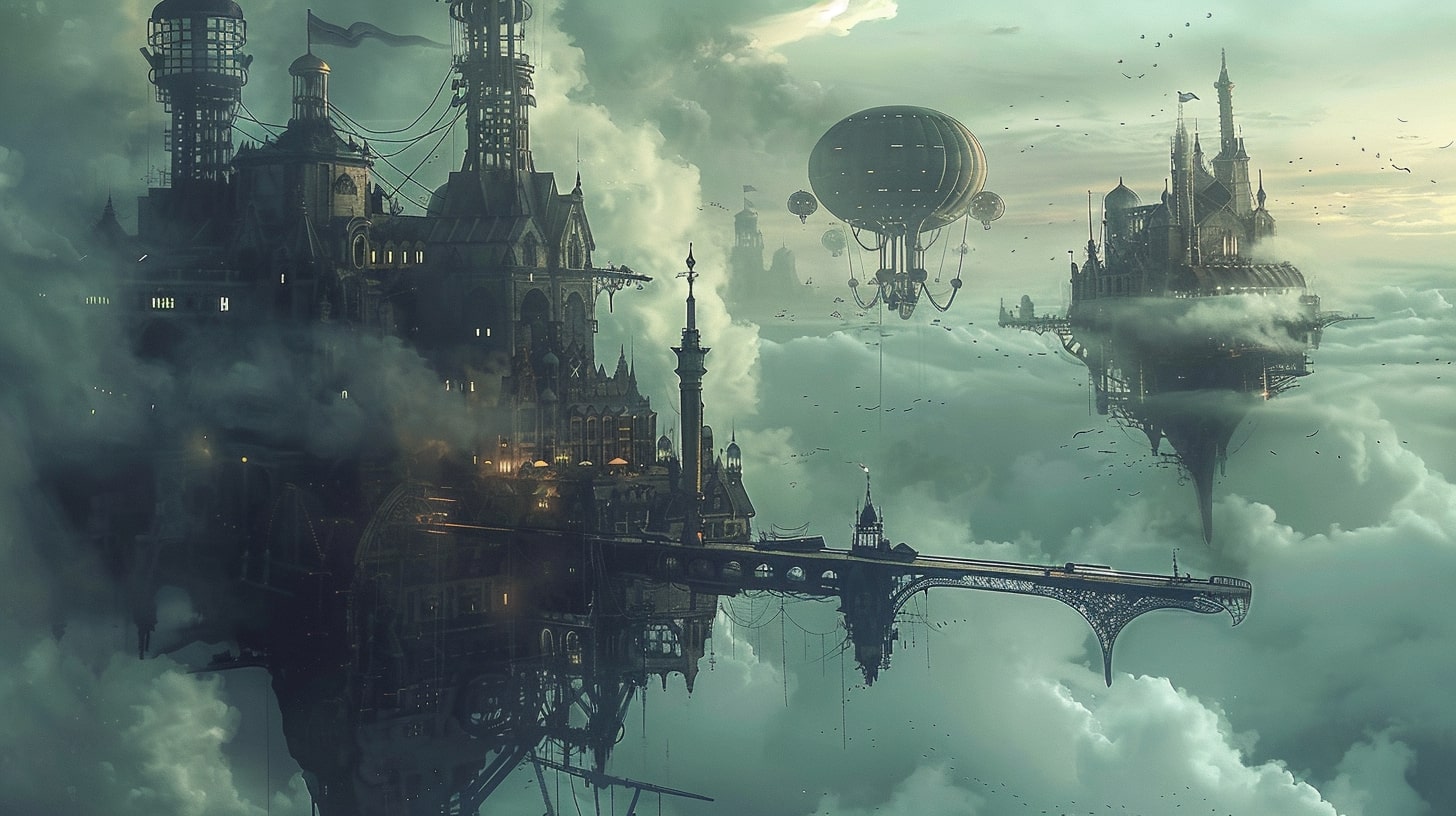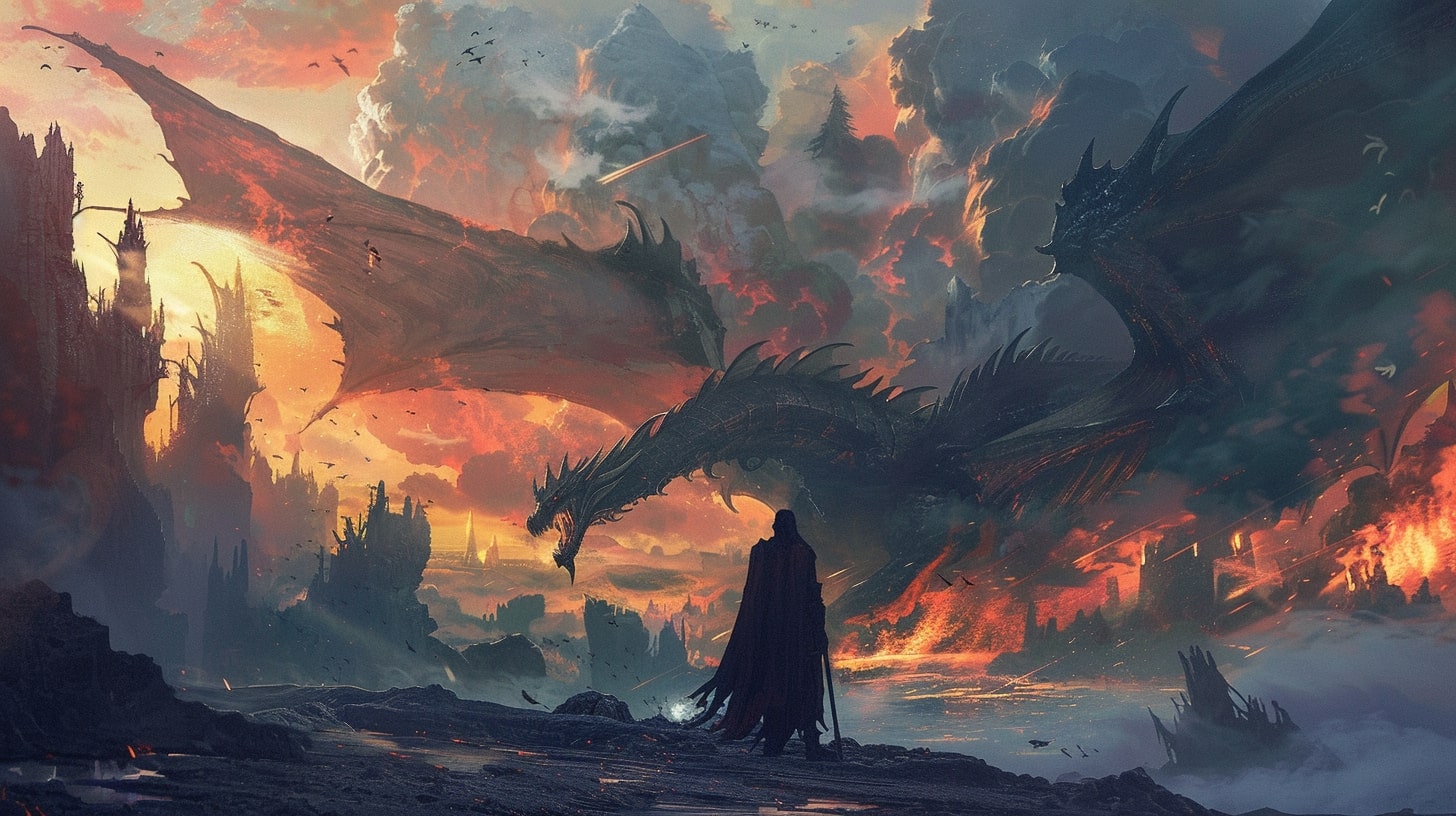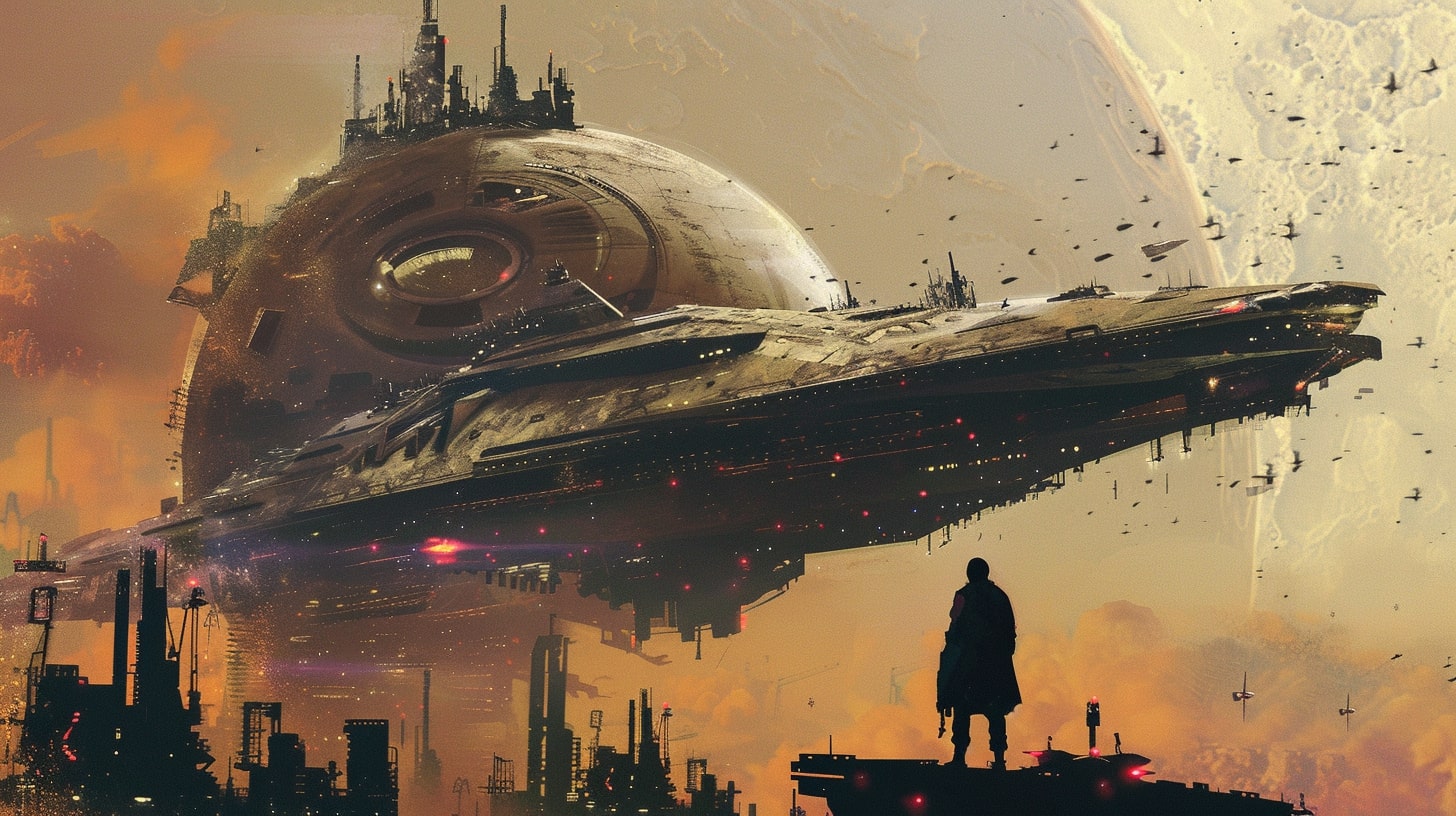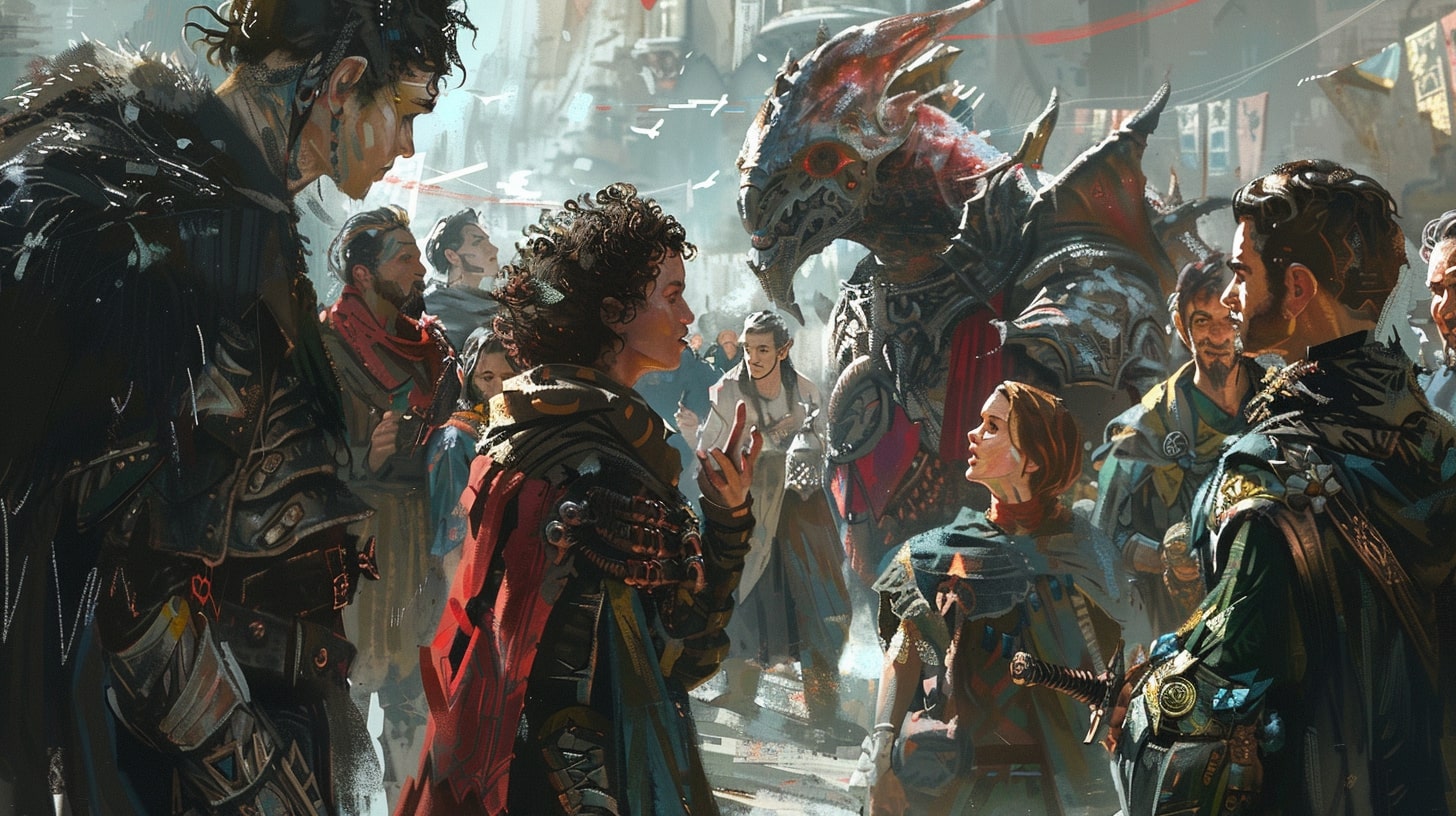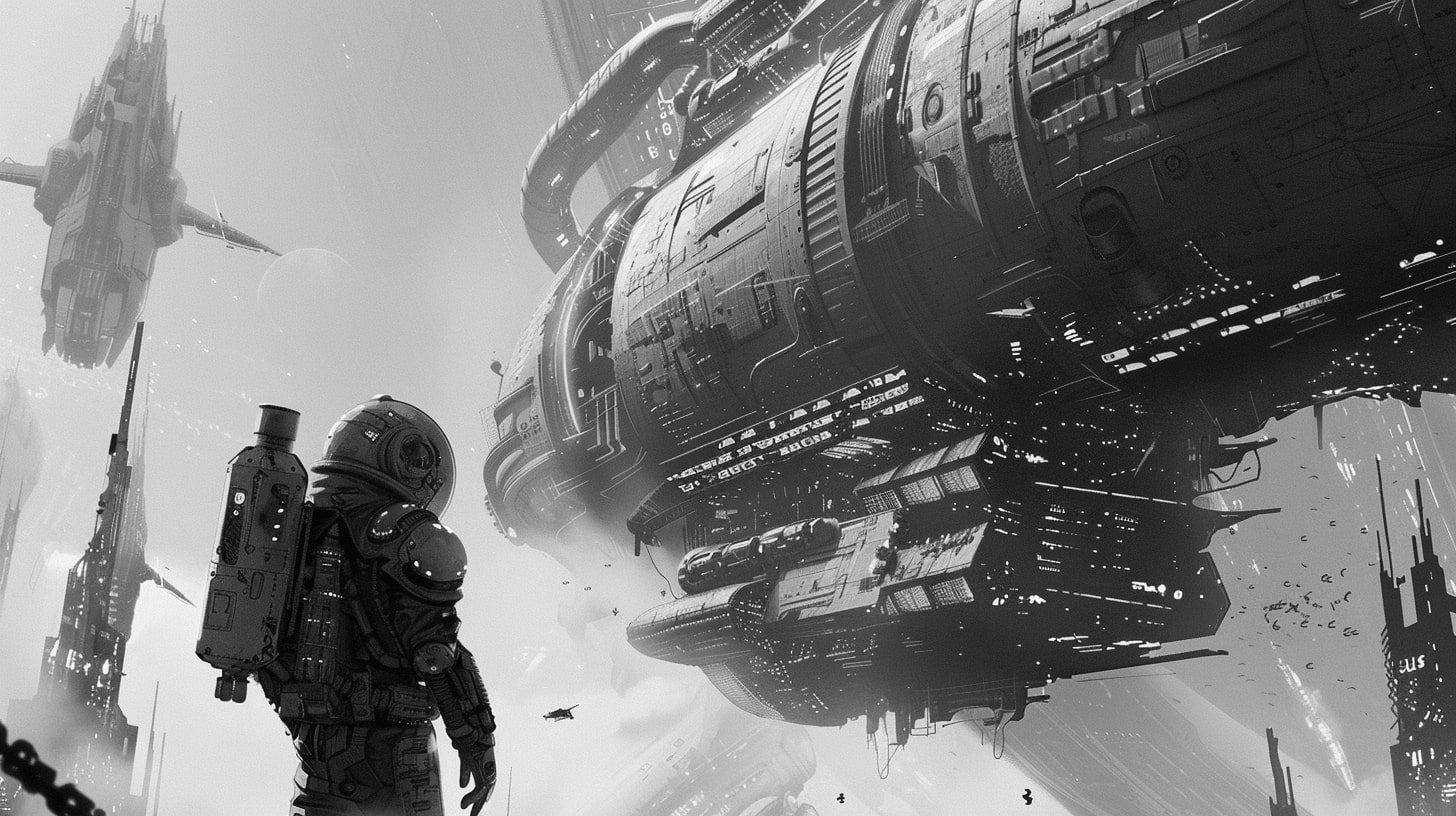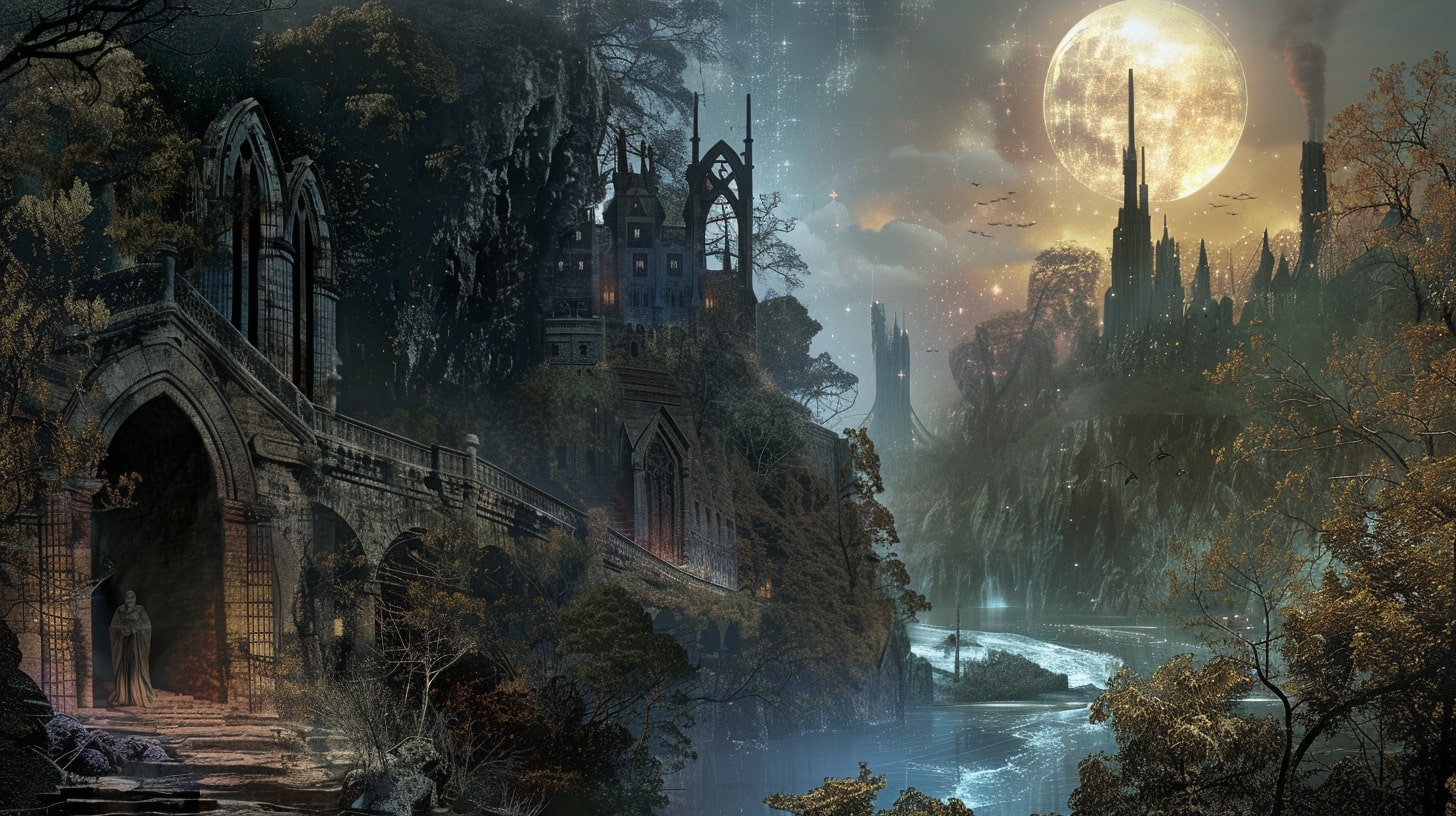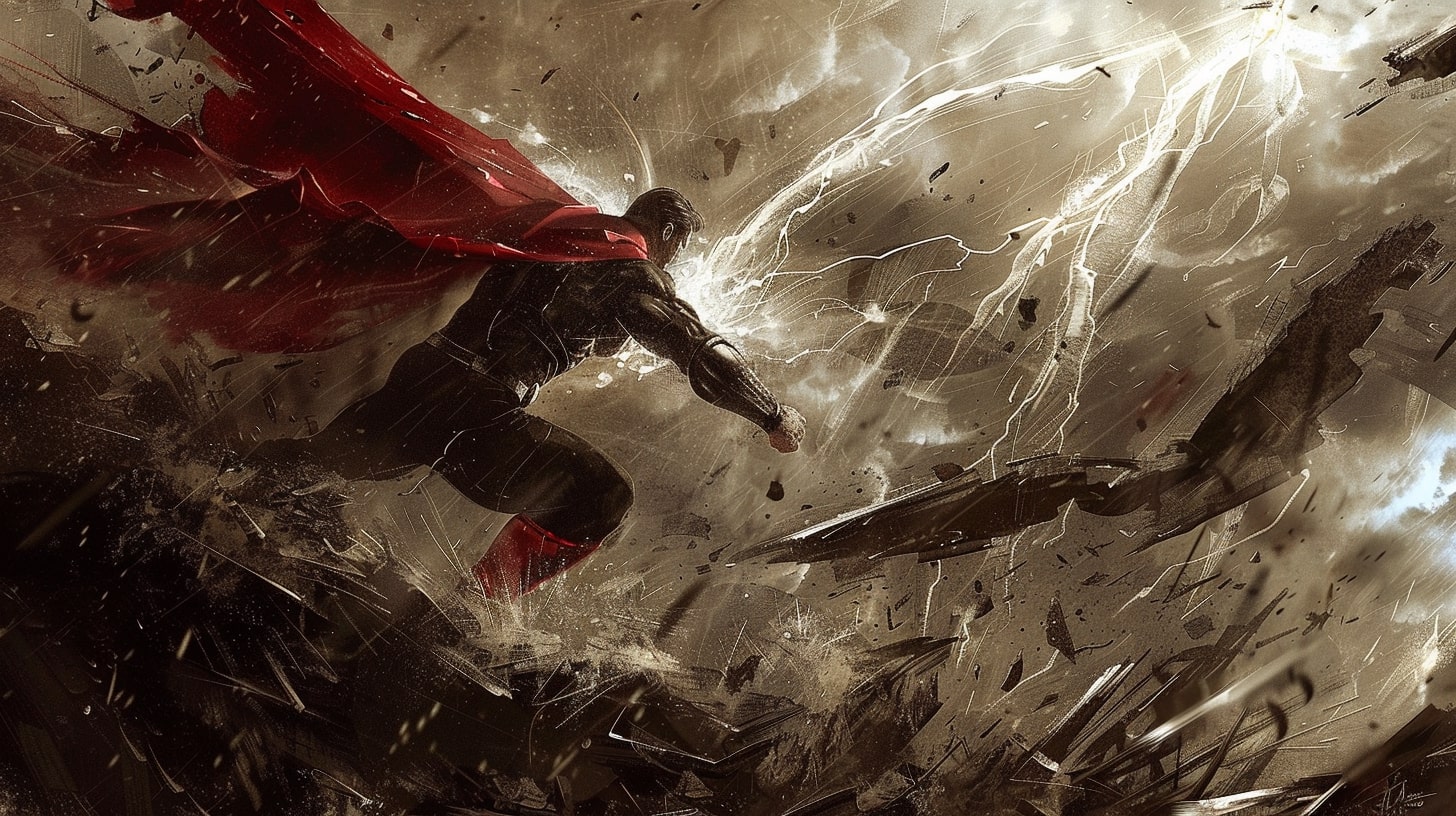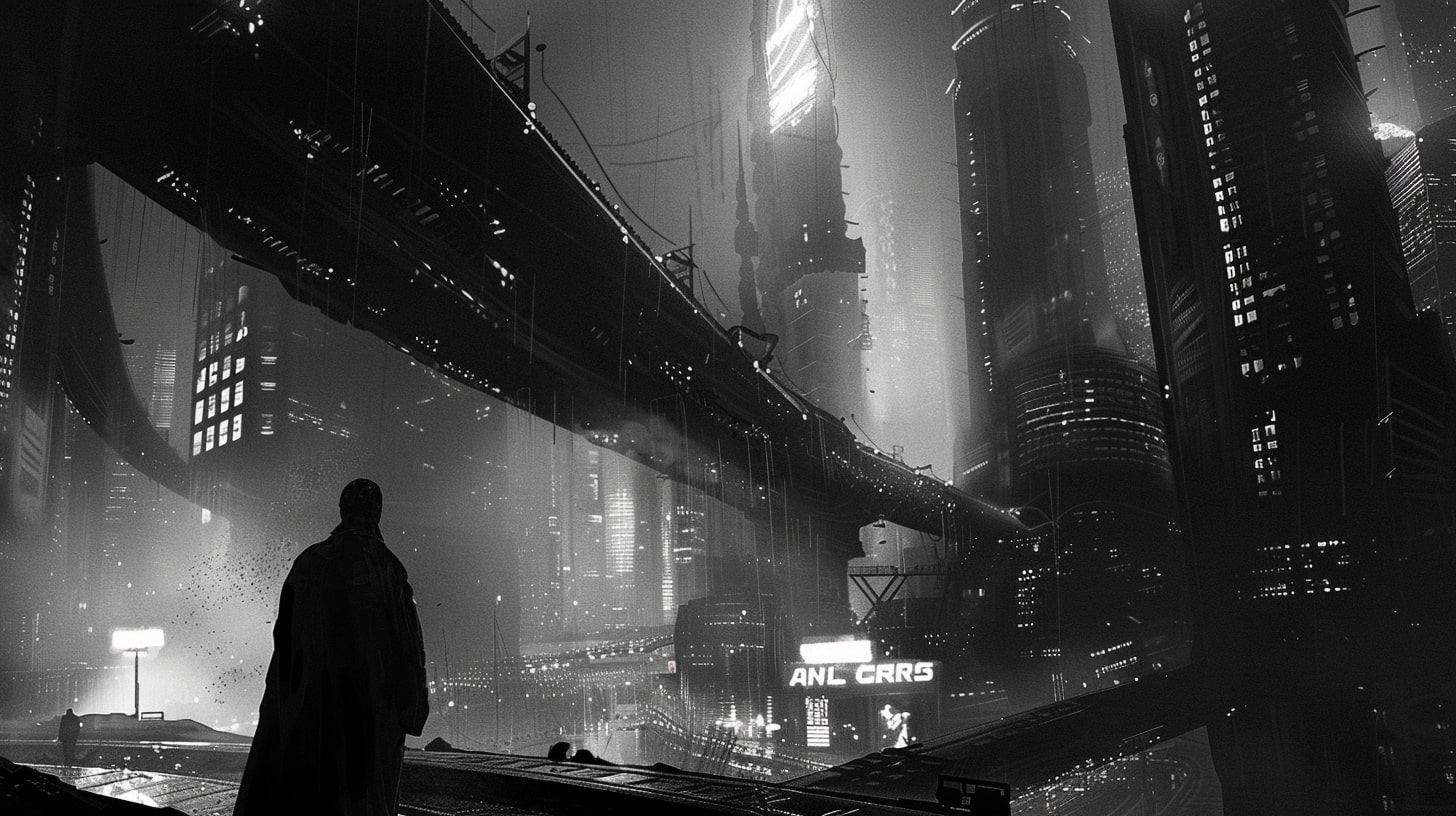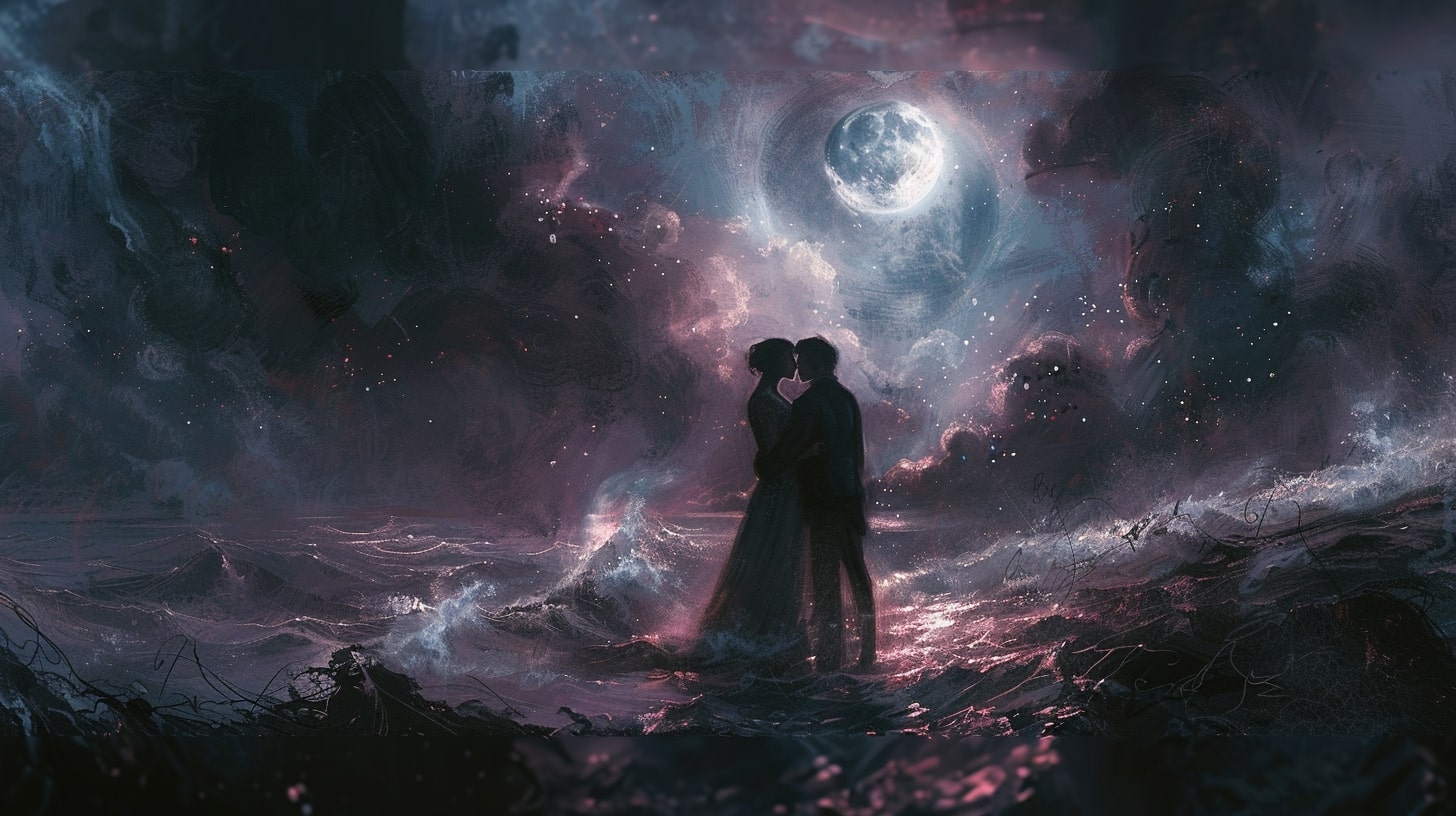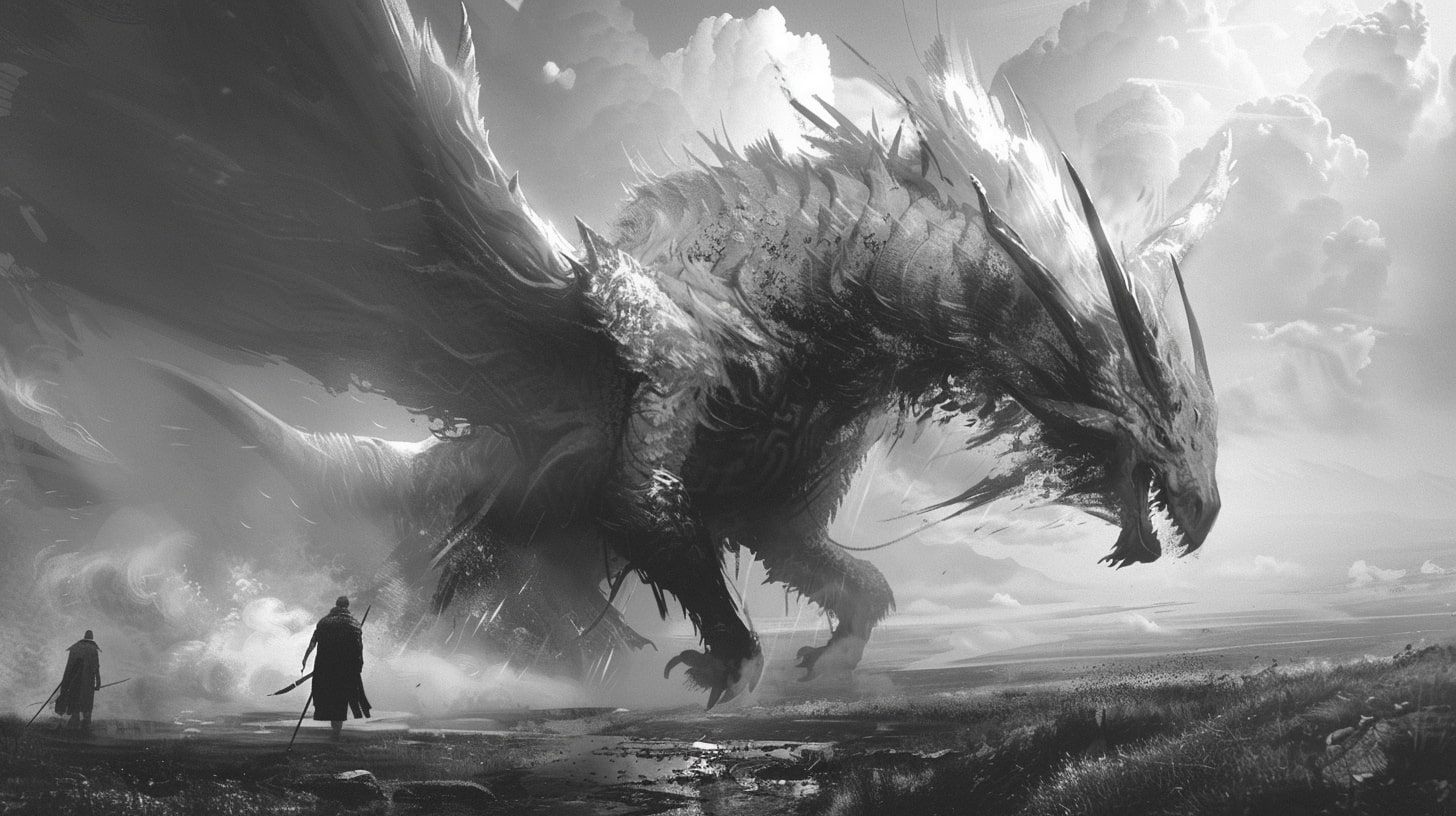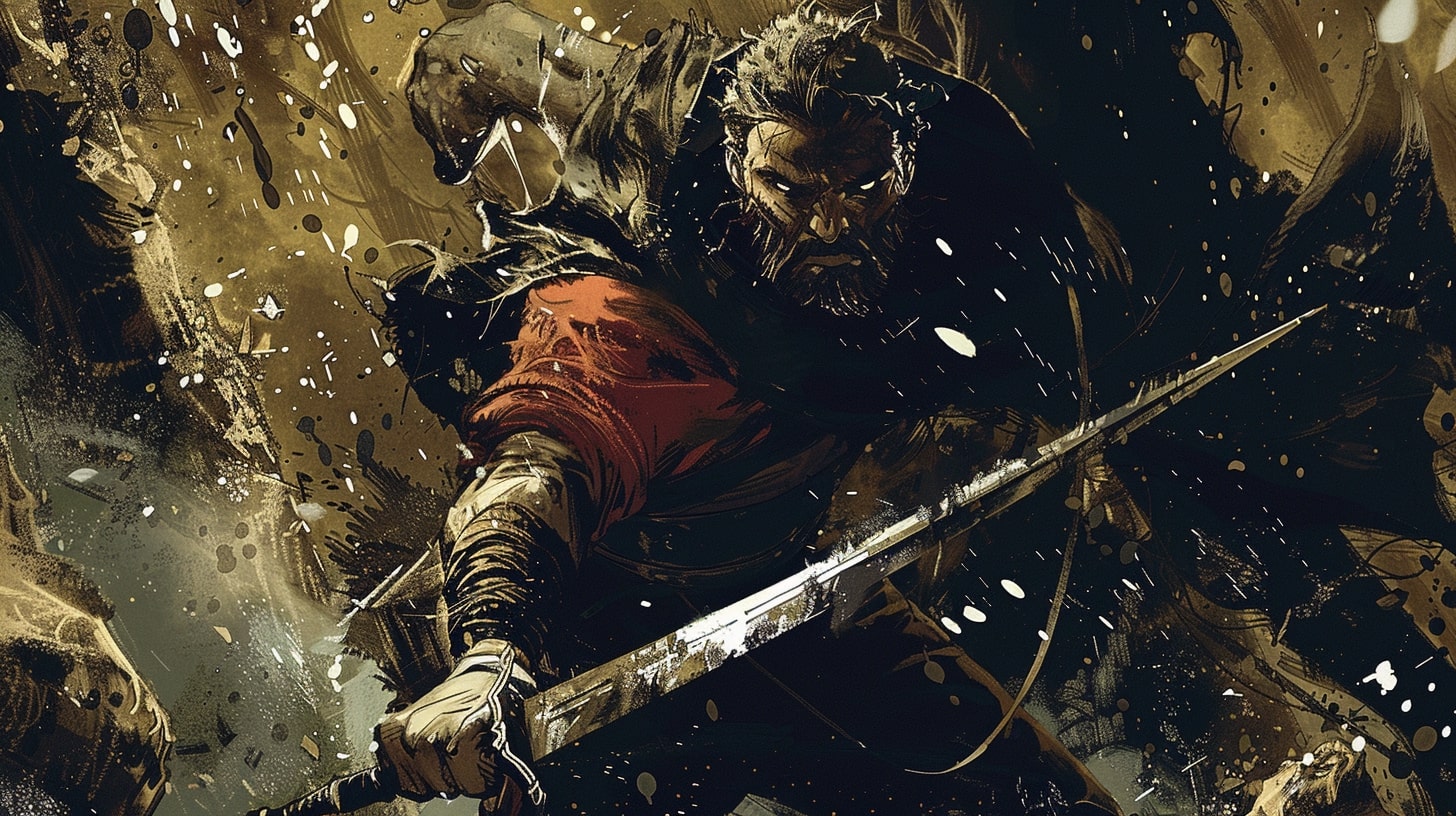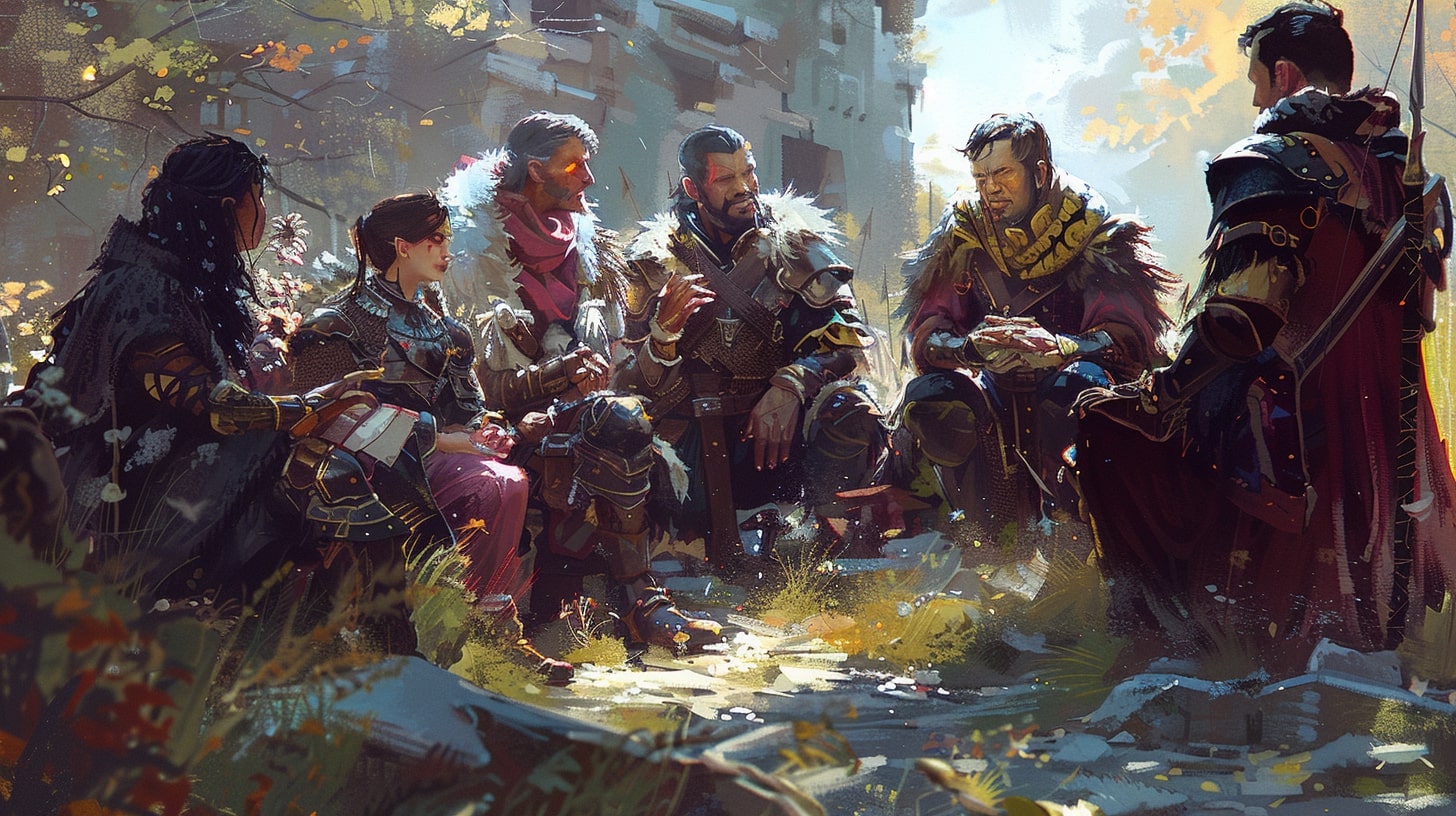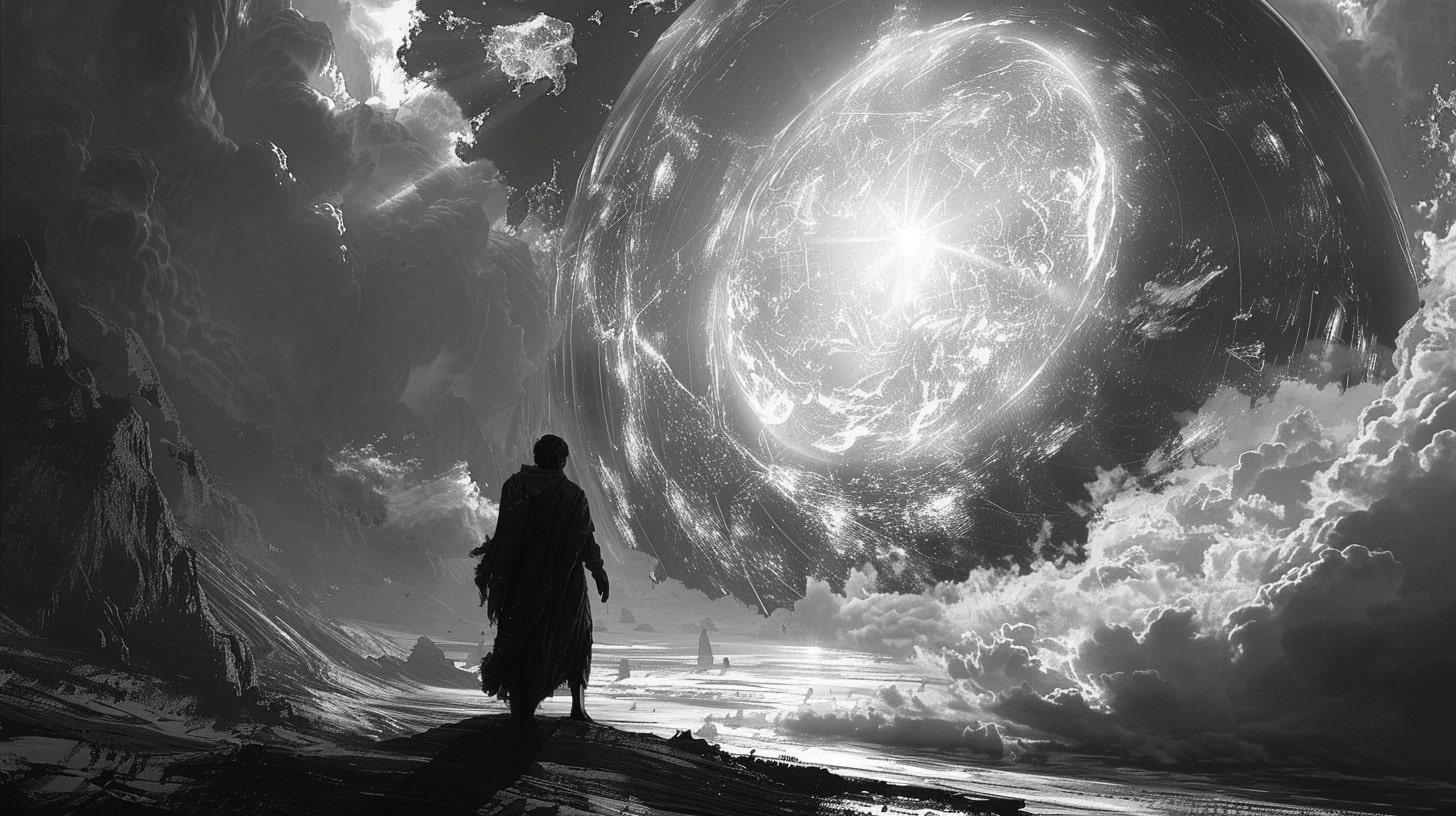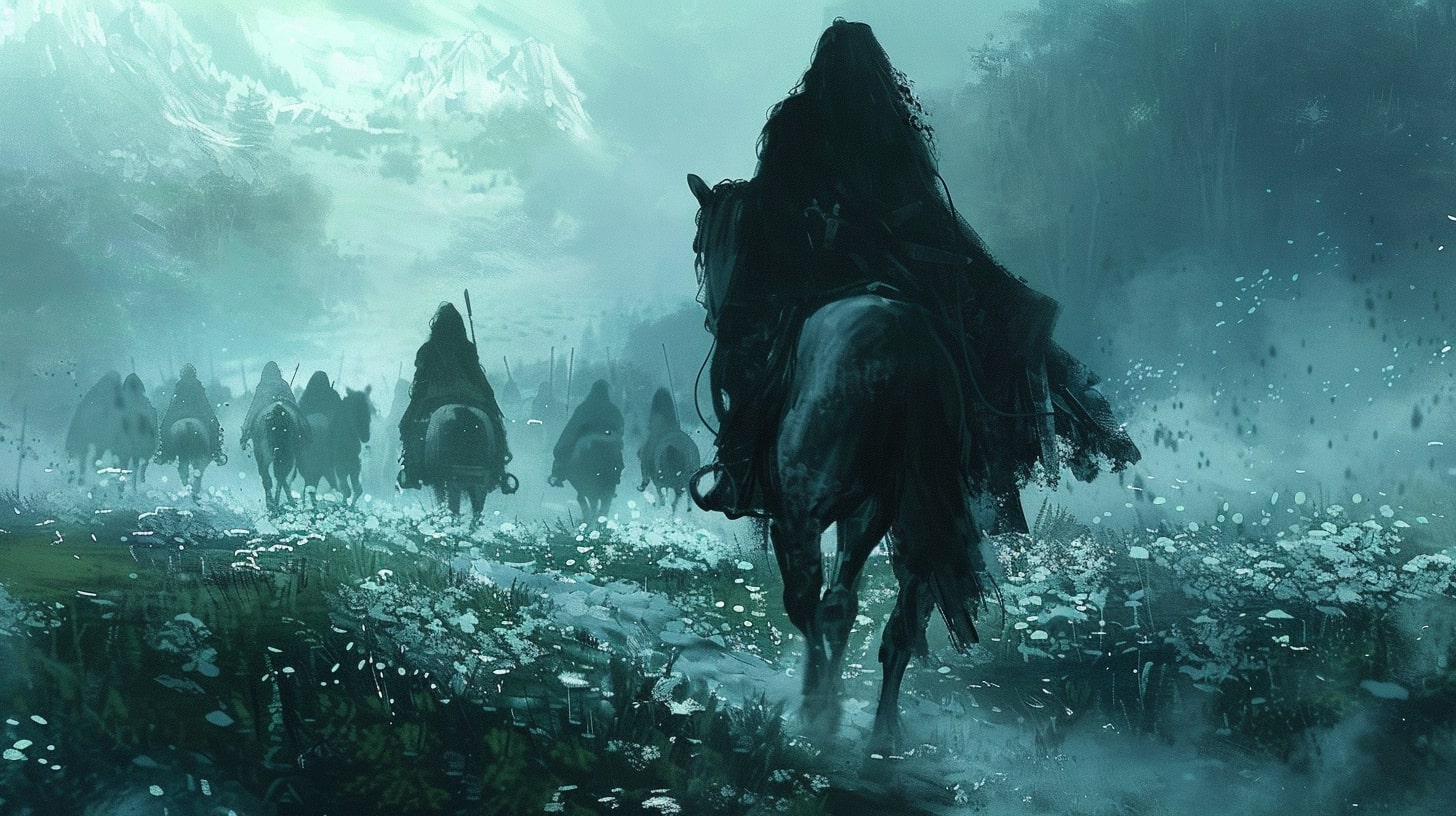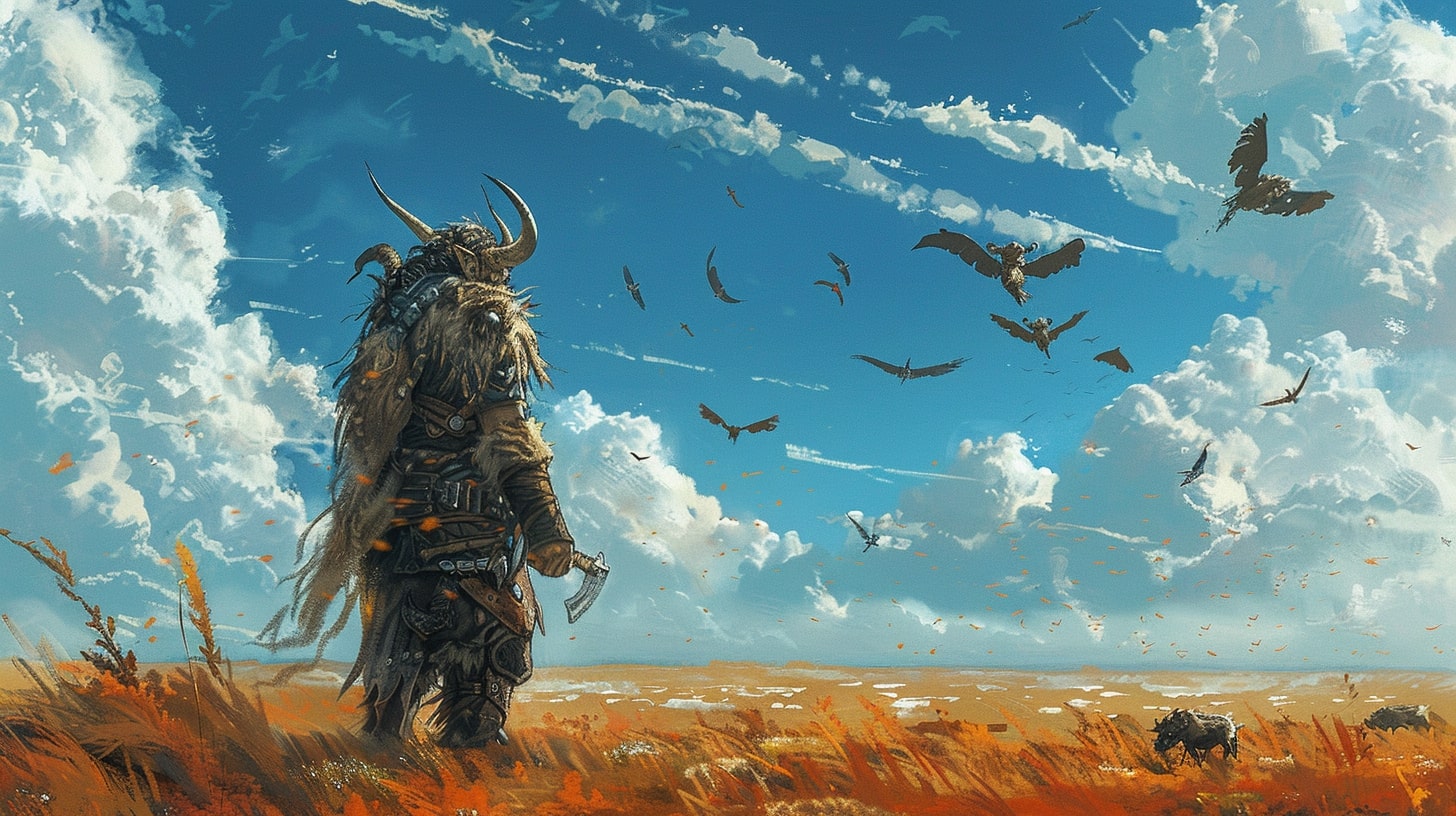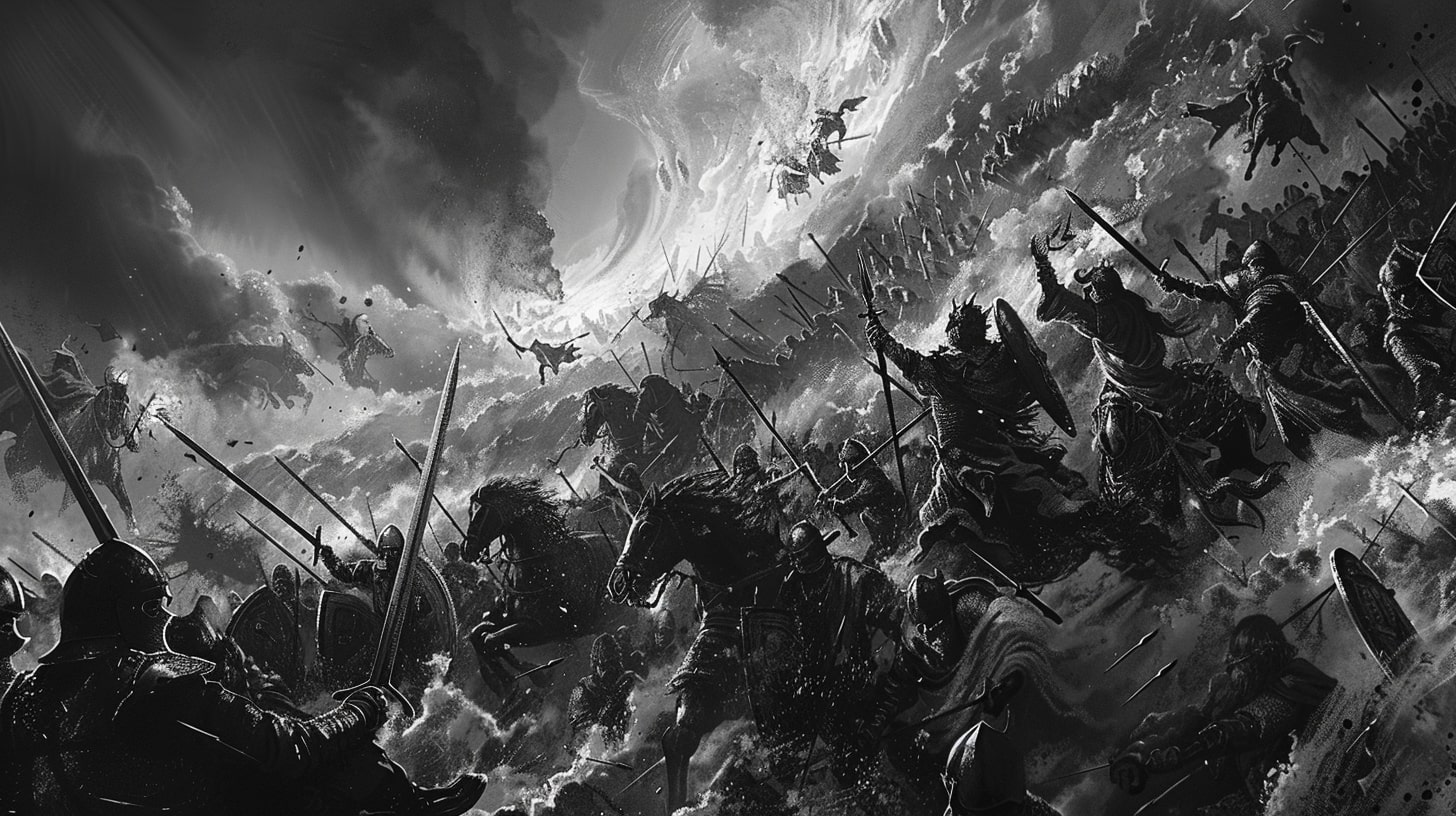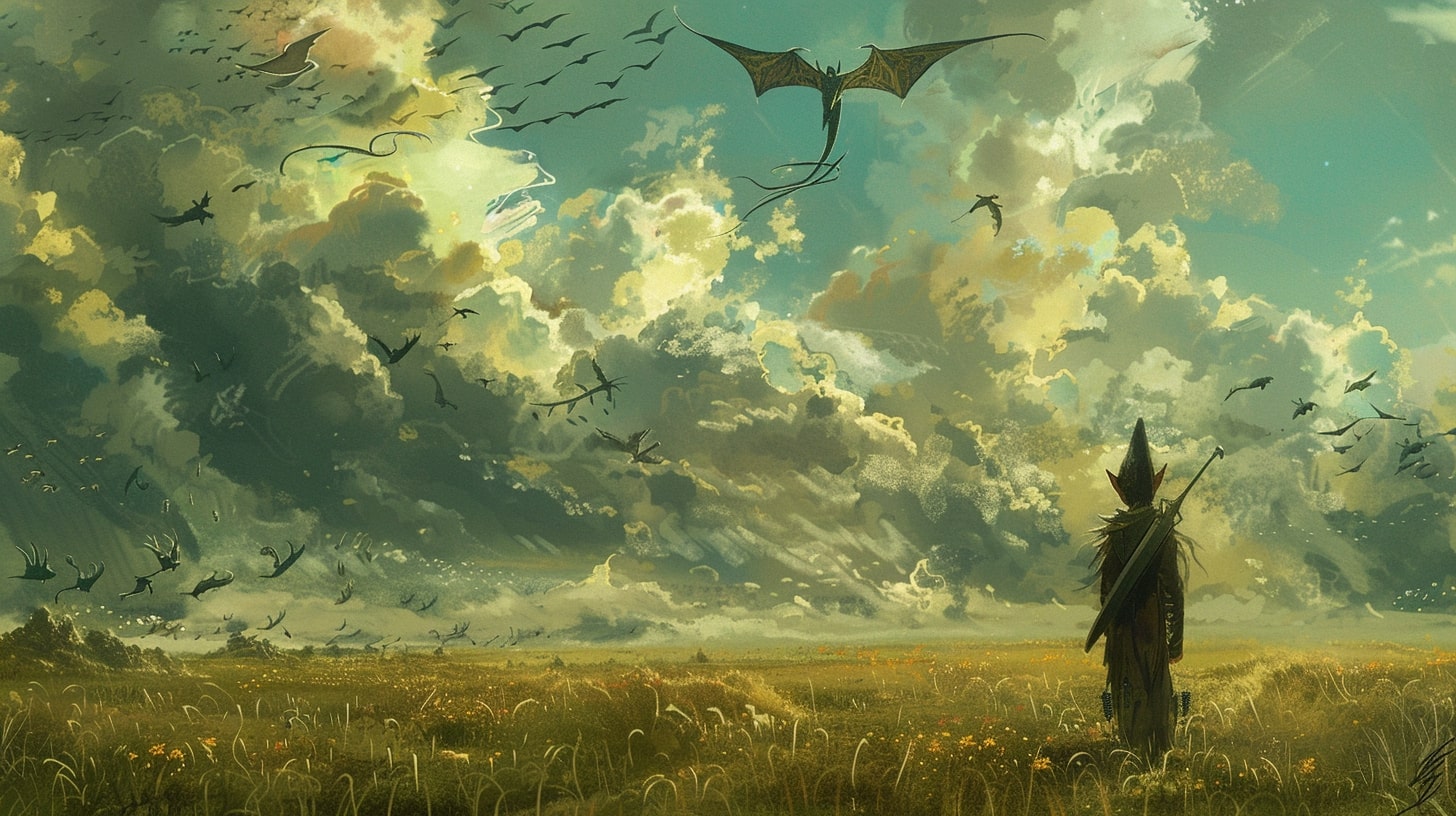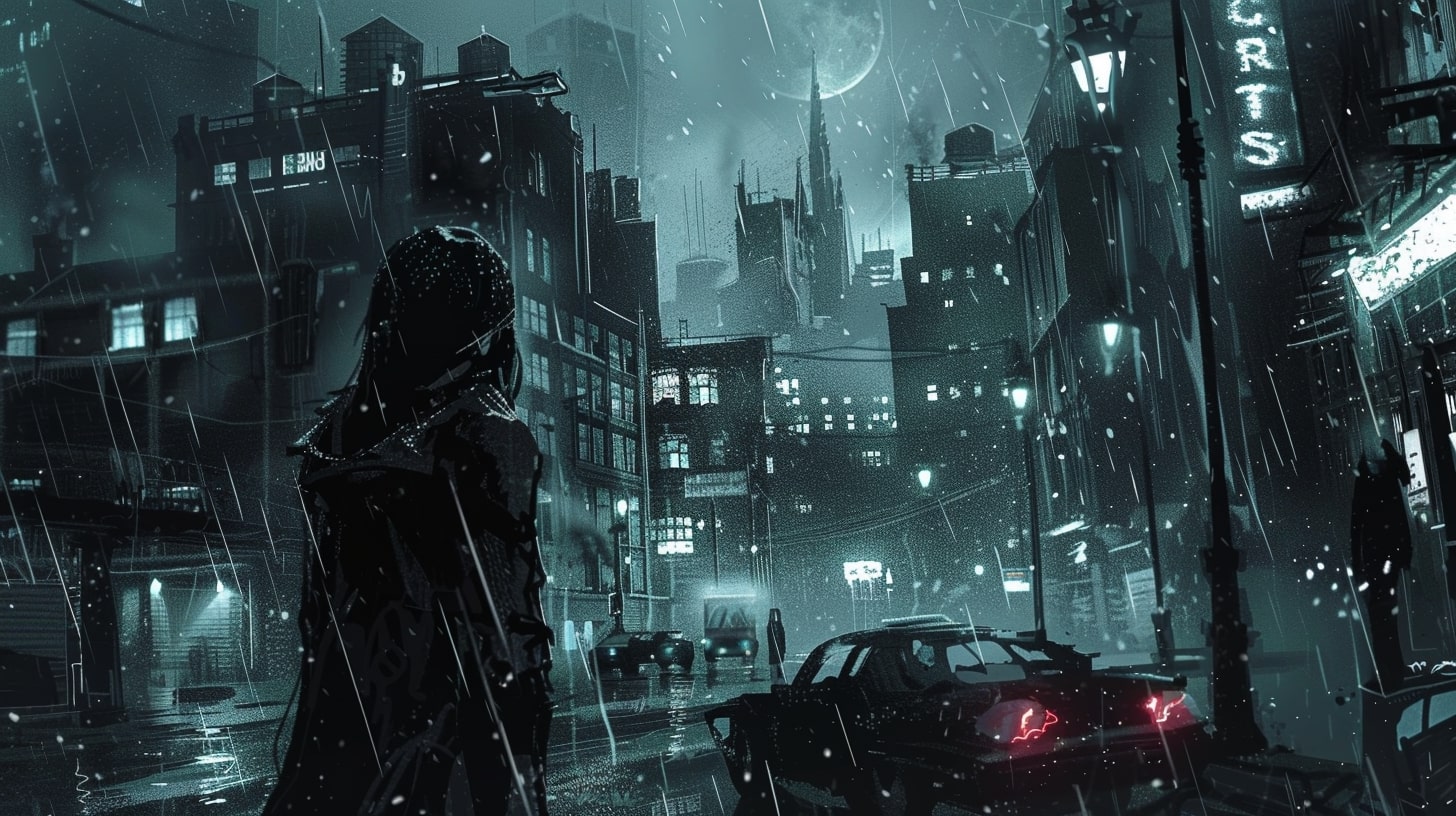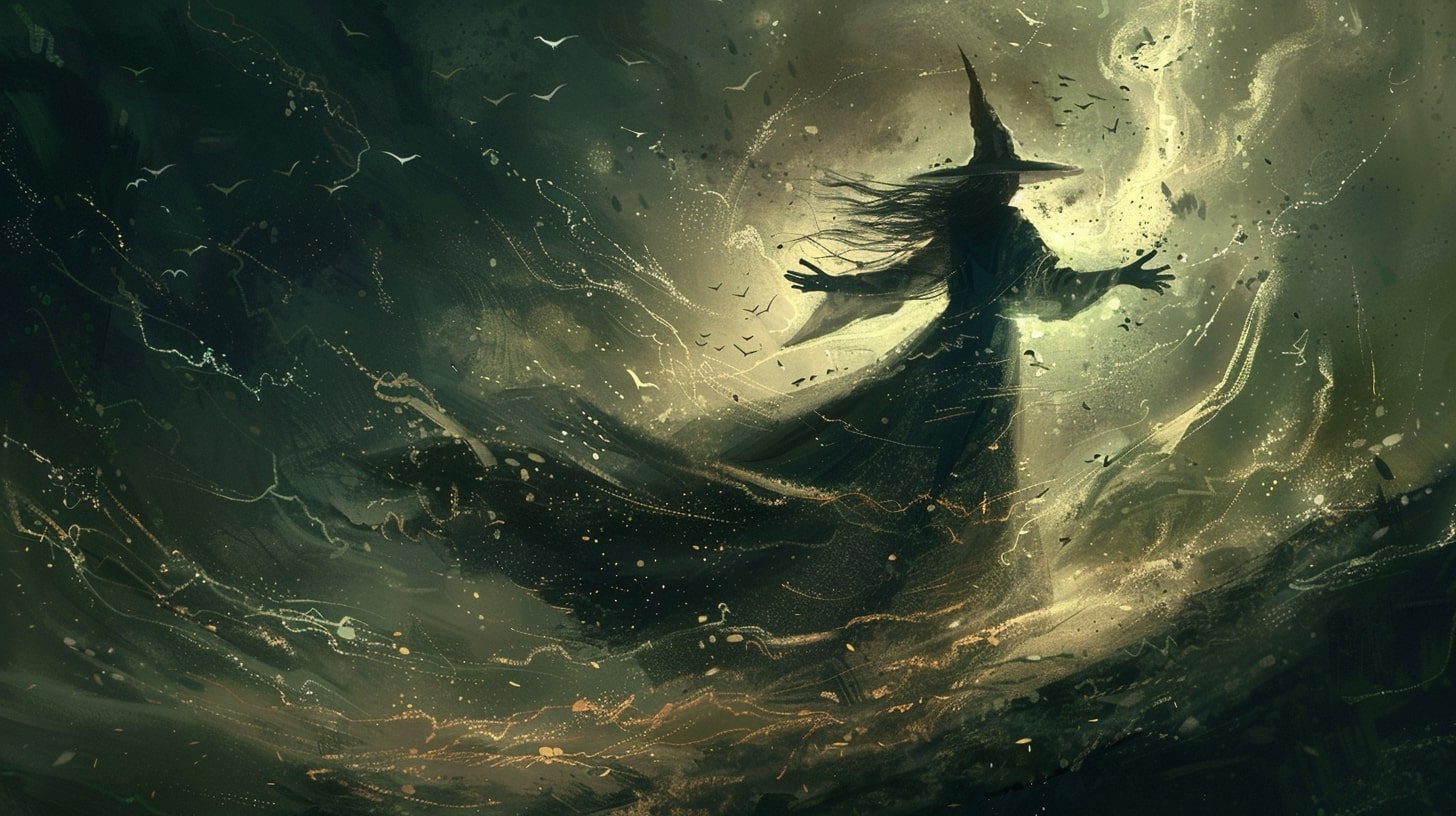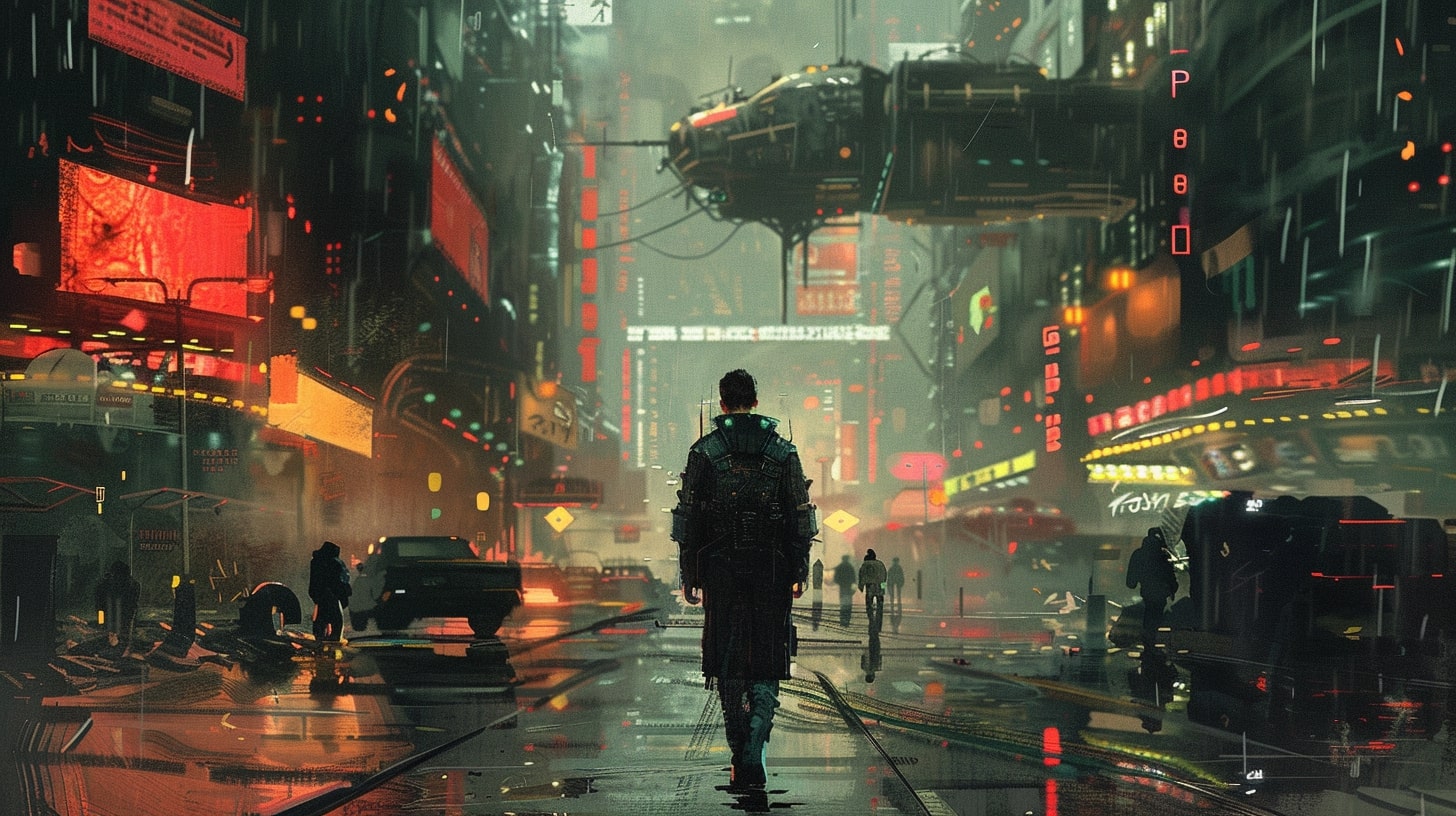Introduction to Steampunk Writing
Welcome to the world of steampunk writing! Steampunk is a captivating subgenre that combines elements of science fiction, fantasy, and the Victorian era.
But writing steampunk stories can prove a challenge if you sit down and start writing blindly. There are elements to steampunk that should always be around in your fantasy writing so let’s ensure you get those basics nailed down in this post.
Ready? Let’s go!
What is Steampunk?
Steampunk is a genre that imagines an alternate history where steam power is the dominant source of technology. It draws inspiration from the aesthetics, fashion, and culture of the 19th century Victorian era, while incorporating futuristic and fantastical elements. Think of steam-powered machines, airships, clockwork contraptions, and a world where advanced technology is driven by gears and cogs.
Steampunk stories often take place in a setting that resembles Victorian cities, but with a twist. This blend of historical and speculative elements creates a unique and visually stunning world for your characters to explore. Whether it’s a bustling metropolis, a hidden underground society, or an adventurous journey across uncharted territories, the possibilities in steampunk are endless.
Why Steampunk Stories Are Captivating
Steampunk stories have a magnetic quality that draws readers in. Here are a few reasons why steampunk is so captivating:
Nostalgic Charm: Steampunk evokes a sense of nostalgia for a bygone era. It transports readers to a time of elegance, mystery, and adventure, while offering a fresh take on familiar historical settings.
Inventive Technology: The fusion of Victorian aesthetics with futuristic technology is a hallmark of steampunk. The imaginative and often whimsical gadgets and inventions found in steampunk stories can be both awe-inspiring and entertaining.
Character-Driven Plots: Steampunk stories often place a strong emphasis on compelling characters. The blend of technology, societal constraints, and the clash of old and new creates a fertile ground for complex character development and intriguing relationships.
Sense of Wonder: Steampunk invites readers to explore a world that is both familiar and fantastical. The juxtaposition of the ordinary and the extraordinary sparks a sense of wonder and curiosity, making every page an exciting journey.
Adventure and Exploration: Steampunk stories are often filled with thrilling adventures, daring escapades, and journeys to uncharted territories. From uncovering ancient secrets to battling sinister forces, steampunk offers a rich tapestry of excitement and escapism.
Now that you have a better understanding of what steampunk is and why it holds such allure, it’s time to delve deeper into the intricacies of crafting your own captivating steampunk story.
In the following sections, we’ll explore the key elements of building your steampunk world, creating compelling characters, plotting your story, and refining your writing style to truly bring your steampunk tale to life. Let’s embark on this extraordinary journey together!
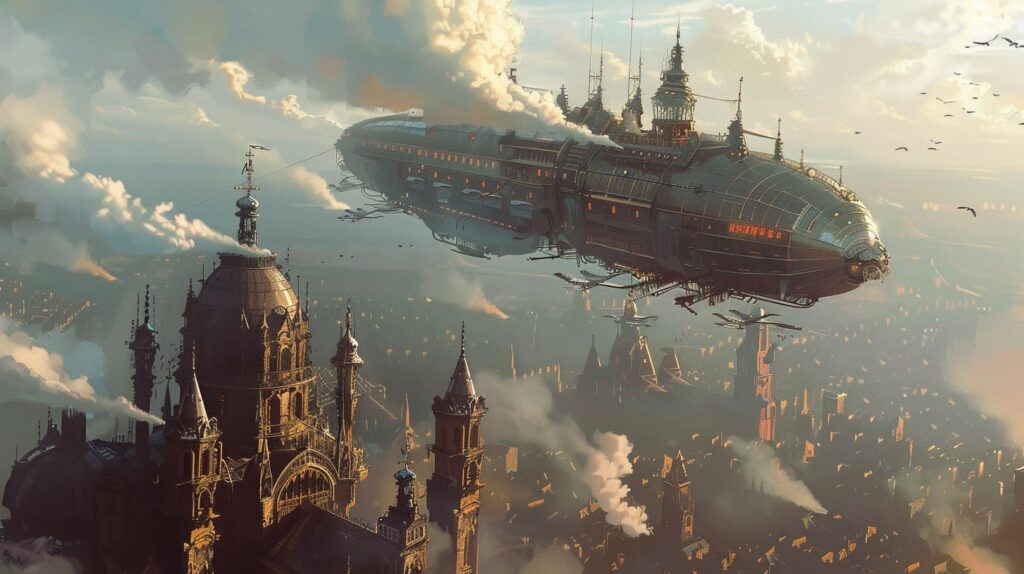
Writing Steampunk Stories: Building Your World
To write captivating steampunk stories, it’s essential to create a rich and immersive world. Building a successful steampunk world involves careful consideration of the setting and atmosphere, the technology and inventions, and the influence of the Victorian era.
However, don’t get too lost in the worldbuilding of it all. There will still be a story that you need to write.
Setting and Atmosphere
The setting and atmosphere of your steampunk world play a crucial role in captivating your readers. Steampunk stories often take place in an alternate version of the Victorian era, where steam power and futuristic technology are prevalent. Consider creating a detailed and vivid backdrop for your story, incorporating elements of Victorian architecture, fashion, and culture.
To make your setting come to life, pay attention to the atmospheric details. Describe the sights, sounds, and smells of your steampunk world, creating a sensory experience for your readers.
Whether it’s the bustling streets of a steampunk city or the eerie silence of an airship floating through the clouds, immerse your readers in the unique atmosphere of your steampunk universe.
Technology and Inventions
One of the defining features of steampunk stories is the advanced technology powered by steam. In your world-building, explore the possibilities of steam-driven machinery, intricate clockwork mechanisms, and fantastical inventions. Think about how these inventions can shape and impact society, whether it’s through transportation, communication, or even warfare.
Consider incorporating fantastical elements into your technology. Steampunk stories often blend elements of science fiction and fantasy, allowing for imaginative and extravagant inventions.
Strike a balance between plausibility and creativity, grounding your inventions in the principles and aesthetics of the Victorian era.
To inspire your technological creations, research the technology and inventions of the Victorian era. Take note of the scientific advancements and discoveries that influenced the time period. This research will provide a solid foundation for crafting believable and captivating steampunk inventions.
Victorian Era Influence
The Victorian era heavily influences steampunk stories, so it’s crucial to capture the essence of this historical period. The Victorian era was characterized by its strict social norms, class distinctions, and rapid industrialization.
Incorporate these elements into your steampunk world, exploring the societal structures, etiquette, and conflicts that arise from them.
Drawing inspiration from the Victorian era, develop your characters with attention to their social standing, aspirations, and limitations. Consider how the societal expectations of the time period shape their motivations and actions.
Additionally, pay attention to the language and dialogue used in your steampunk world. Infuse your writing with the eloquence and formality associated with the Victorian era. This linguistic style will enhance the authenticity of your steampunk storytelling.
By carefully crafting the setting and atmosphere, exploring technology and inventions, and embracing the influence of the Victorian era, you can construct a captivating steampunk world that will immerse your readers in a thrilling and imaginative experience. For more tips on writing fantasy and sci-fi stories, check out our article on how to write fantasy novels.

Creating Compelling Characters
To write captivating steampunk stories, it is essential to create compelling characters that resonate with your readers. In this section, we will explore how to develop protagonists and antagonists, the use of steampunk archetypes, and the importance of balancing technology and character development.
Protagonists and Antagonists
When crafting your steampunk story, the protagonists and antagonists play crucial roles in driving the narrative forward. The protagonist, often the main character, is the hero or heroine who faces challenges and drives the story’s action. The antagonist, on the other hand, provides conflict and opposition to the protagonist’s goals.
To make your protagonists and antagonists compelling, consider their motivations, strengths, weaknesses, and conflicts. Give them depth and complexity, allowing readers to connect with their struggles and aspirations. Remember that both protagonists and antagonists can have varying degrees of complexity, making them more relatable and engaging.
Steampunk Archetypes
Steampunk stories often feature archetypal characters that embody specific roles and traits commonly found in the genre. These archetypes can add depth and familiarity to your story, while still leaving room for unique characteristics:
The Inventor/Scientist: This character is a master of technology and plays a key role in creating or utilizing the steampunk devices and inventions that populate your world.
The Airship Captain: A daring and skilled pilot, the airship captain embodies adventure and exploration, navigating the skies in fantastical airships.
The Tinkerer/Engineer: This character possesses exceptional mechanical skills and is often responsible for repairing, modifying, or building intricate steampunk gadgets.
The Aristocrat: A member of the upper class, the aristocrat represents the societal hierarchy of the Victorian era, bringing themes of privilege and class into your story.
The Mad Scientist: A character driven by obsession and ambition, the mad scientist pushes the boundaries of science and morality, often with disastrous consequences.
The Steampunk Detective: Combining elements of mystery and steampunk technology, this character solves crimes and uncovers secrets in a world filled with intrigue and adventure.
Remember that these archetypes serve as starting points and can be blended or subverted to create unique and memorable characters in your steampunk story.
Balancing Technology and Character Development
In steampunk stories, the technology and inventions of the era are often integral to the plot and world-building. However, it’s important to strike a balance between showcasing the steampunk elements and developing your characters.
While the steampunk gadgets and machinery may be fascinating, ensure that they do not overshadow your characters’ growth and emotional arcs. Use the technology as a tool to advance the plot and explore the characters’ motivations, relationships, and personal journeys.
Allow your characters to have meaningful interactions with the steampunk world you’ve created. Show how the technology affects their lives, beliefs, and desires. By intertwining the characters’ development with the steampunk elements, you can create a rich and immersive reading experience.
Remember that the heart of any story lies in its characters. Invest time in crafting well-rounded protagonists and antagonists, utilize steampunk archetypes as a foundation, and find the balance between technology and character development. This will ensure that your steampunk story captivates readers and leaves a lasting impression.

Plotting Your Steampunk Story
As you embark on your journey of writing a captivating steampunk story, it’s essential to consider the plot elements that make the genre so intriguing. In this section, we’ll explore three key aspects of plotting your steampunk story: adventure and exploration, mystery and intrigue, and incorporating historical events.
Adventure and Exploration
One of the hallmarks of steampunk stories is the sense of adventure and exploration. Take your readers on a thrilling journey through a richly imagined steampunk world. Create a protagonist who embarks on daring quests, uncovers hidden secrets, and navigates through uncharted territories.
Consider incorporating elements of exploration, whether it’s through unexplored landscapes, undiscovered inventions, or the pursuit of ancient artifacts. Allow your characters to encounter unexpected challenges, encounter strange creatures, and discover new frontiers within the steampunk world you’ve crafted.
Mystery and Intrigue
Intrigue and mystery play a vital role in captivating readers of steampunk stories. Weave intricate plots filled with suspense, secrets, and unexpected twists. Incorporate elements of detective work, espionage, or political intrigue to keep your readers on the edge of their seats.
Introduce enigmatic characters, hidden agendas, and unsolved puzzles that the protagonist must unravel. The combination of steampunk technology and a mysterious atmosphere provides a fertile ground for suspenseful storytelling.
Incorporating Historical Events
A fascinating aspect of steampunk is its connection to the Victorian era. By incorporating historical events into your steampunk story, you can add depth and authenticity to your narrative. Research significant events, technological advancements, and societal changes that occurred during the Victorian era and find ways to integrate them into your plot.
For example, you could reimagine historical figures as steampunk inventors, revolutionize historical events with steampunk technology, or explore the consequences of alternate historical outcomes. This blending of history and fantasy adds layers of complexity to your story and engages readers with a familiar yet fantastical backdrop.
By incorporating elements of adventure and exploration, mystery and intrigue, and historical events, you can create a compelling plot that keeps readers captivated and eager to explore the steampunk world you’ve crafted.
Remember to balance these plot elements with strong character development, vivid descriptions, and an immersive writing style to bring your steampunk story to life. For more tips on crafting engaging fantasy and sci-fi plots, check out our article on crafting sci-fi plots.
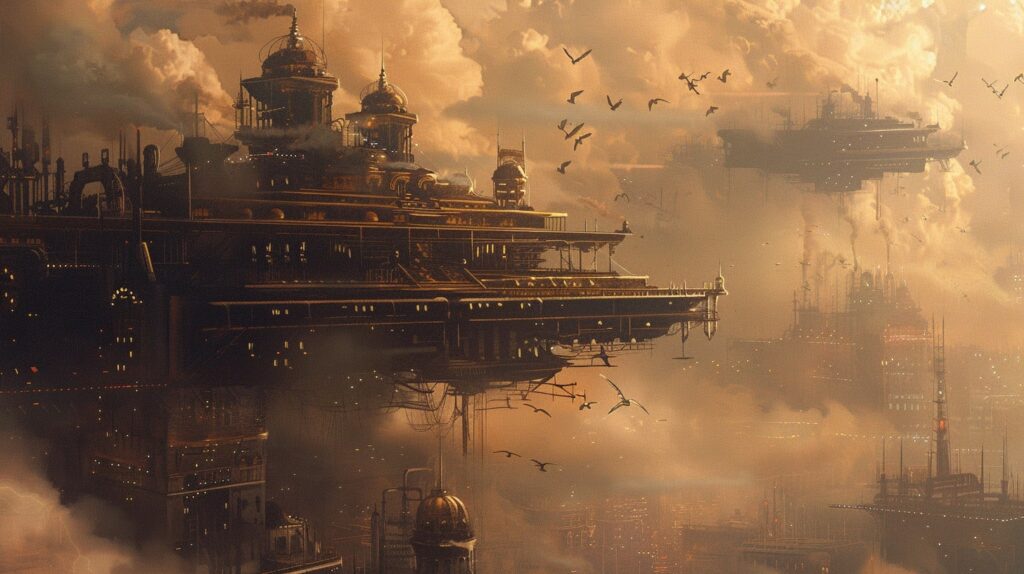
Writing Style and Language
To truly immerse your readers in the world of steampunk, your writing style and language play a crucial role. By adopting a style that reflects the Victorian era and using descriptive language, you can transport your readers to a bygone era while maintaining an engaging narrative.
Additionally, finding the right balance of steampunk jargon is essential to enhance the authenticity of your story. Let’s explore each aspect in detail.
Victorian Era Language
The Victorian era was known for its distinct language and mannerisms. To capture the essence of this era, incorporate vocabulary, idioms, and phrases commonly used during that time.
This can include formal speech patterns, politeness, and attention to social etiquettes. By infusing your writing with these elements, you can create an immersive experience for your readers. For a comprehensive guide on crafting dialogue and language for your steampunk story, check out our article on writing fantasy dialogue.
Descriptive Writing
Descriptive writing is vital in steampunk storytelling as it allows you to paint a vivid picture of your world. Describe the intricate details of the technology, the attire of your characters, and the bustling atmosphere of the steampunk city.
Pay attention to sensory details such as sights, sounds, smells, and textures to transport your readers into your story. Utilize descriptive language to evoke emotions and create a tangible sense of place. For additional tips on descriptive writing, refer to our article on fantasy writing tips.
Balancing Steampunk Jargon
Steampunk stories often feature unique terminologies and jargon specific to the genre. While these terms can add authenticity and flavor to your storytelling, it’s essential to strike a balance.
Overusing steampunk jargon can overwhelm readers and hinder their understanding of the story. Introduce and explain steampunk terms organically, ensuring that they enhance the narrative without overshadowing it.
By adopting a writing style that reflects the Victorian era, employing descriptive language, and balancing the use of steampunk jargon, you can craft captivating steampunk stories that transport your readers to an alternate world filled with wonder and adventure.
Remember to immerse yourself in the research of the Victorian era to ensure authenticity and to explore other resources on writing engaging fantasy and science fiction stories.

Steampunk Writing Tips and Tricks
To write captivating steampunk stories, there are several tips and tricks that can help you bring your vision to life. Here are some key considerations to keep in mind:
Researching the Victorian Era
Immerse yourself in the rich history and aesthetics of the Victorian Era. Studying the fashion, architecture, social customs, and technological advancements of the time will add depth and authenticity to your steampunk world.
By understanding the nuances of this period, you can incorporate accurate details and create a believable and engaging narrative. Check out our article on how to write fantasy novels for more tips on researching and world-building.
Adding Elements of Science Fiction and Fantasy
Steampunk is a genre that combines the aesthetics of the Victorian Era with elements of science fiction and fantasy. As you write your steampunk story, consider incorporating imaginative inventions, fantastical creatures, or even supernatural elements.
This fusion of genres allows you to explore unique concepts and create a world that is both familiar and extraordinary. For more inspiration, take a look at our article on fantasy writing tips.
Injecting Humor and Quirkiness
Steampunk stories often embrace a sense of whimsy, humor, and quirkiness. Don’t be afraid to infuse your narrative with witty dialogue, eccentric characters, or unexpected plot twists.
This lighthearted approach can add charm and entertainment value to your steampunk world. Remember to strike a balance between the serious and the whimsical, ensuring that the humor enhances the story rather than detracts from it. For guidance on crafting engaging characters, refer to our article on developing fantasy characters.
By researching the Victorian Era, incorporating elements of science fiction and fantasy, and injecting humor and quirkiness into your writing, you can create captivating steampunk stories that transport readers to a unique and imaginative world. Remember to stay true to your creative vision and have fun exploring the limitless possibilities of the genre. Happy writing!

